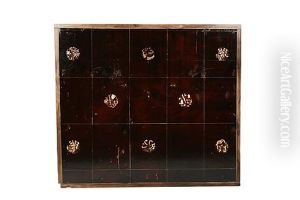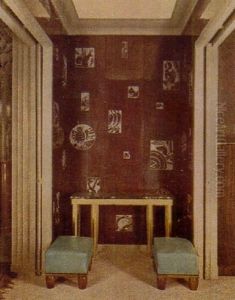Rene Prou Paintings
René Prou, born in 1889 in France, was an influential figure in the evolution of 20th-century French decorative arts and interior design, particularly during the Art Deco period. Although not as widely known as some of his contemporaries like Émile-Jacques Ruhlmann or Jean-Michel Frank, Prou's contributions to the field were significant, and his work is recognized for its elegance and creativity.
Prou's early years were spent developing his artistic sensibility, which later blossomed into a career that combined traditional craftsmanship with the modernist impulses of the early 20th century. His designs often incorporated elements of nature, including floral and fauna motifs, which became a signature aspect of his work. He was adept at a variety of materials, including wrought iron, wood, and glass, and his furniture pieces often featured rich veneers and inlays that were popular during the Art Deco era.
During his career, Prou was part of the larger movement that defined French design in the first half of the 20th century. He participated in major exhibitions, such as the 1925 Exposition Internationale des Arts Décoratifs et Industriels Modernes in Paris, which gave the Art Deco movement its name. His work was well-received, and he garnered a reputation for his refined and sophisticated approach to design.
René Prou's contribution to interior design extended beyond furniture; he was also involved in designing interiors for transatlantic liners, which were showcases for the modernist aesthetic and technical innovation. His designs for these luxurious spaces reflected the era's preoccupation with speed, travel, and the machine age. The emphasis on comfort, functionality, and style in his work for these liners paralleled the wider trends in Art Deco design across various disciplines.
Prou's work declined in prominence after World War II, as tastes changed and new styles emerged. He passed away in 1947, leaving behind a legacy that has been somewhat overshadowed by other designers of the period. However, his contributions are still appreciated by collectors and historians of the Art Deco style. René Prou's furniture and design work continue to be celebrated for their craftsmanship, beauty, and their embodiment of an era where art and design sought to harmonize the traditional with the modern.



